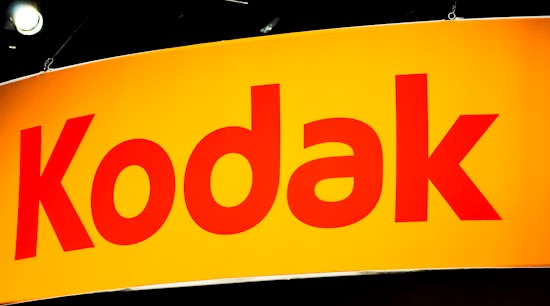
What Game-Changing Idea Are You Ignoring?
Photo Courtesy: Kodak
In 1975, a Kodak engineer invented the technology that would one day transform the photographic industry. Kodak leaders ignored it; they simply couldn’t see its potential. In 2012, the company declared bankruptcy, based largely on the overwhelming advances of the invention they’d overlooked 37 years earlier.
It’s a well-scrutinized business school case-study: students at Wharton , Kellog and McCombs now analyze how an industry giant succumbs to a long, slow, agonizing failure by refusing to evolve.
Question: What disruptive, alternative, mind-blowing opportunity are you ignoring right now? Pay attention, or you may one day meet a fate similar to Kodak.
The Evolutionary Death Sentence: Evolve or Die.
Here’s the story: Eastman Kodak owned the photography world in the 1970s and 1980s.
If you bought a camera, flashbulb or film, you most likely paid Kodak. At its zenith in 1996, Kodak employed 140,000 workers and was America’s 4th most influential consumer brand, behind only Disney, Coke and McDonalds. Kodak had captured 90% of the commercial film market. That’s power.
Then digital cameras became cheap, fun and effective, heralding the beginning of the end for the big red-and-gold brand.

Courtesy: Kodak
Back in 1972, however, a 25-year-old Kodak engineer named Steve Sasson had presented his supervisors an invention he thought had tremendous potential: digital photography. At the time, though, Kodak was all about FILM: developing photos on FILM, with all the paper and chemicals required. Sasson’s breakthrough had the potential of producing images without film, so his managers were not interested. It didn’t fit their existing business model. Management’s reaction was, ‘that’s cute—but don’t tell anyone about it.’ An astounding oversight, as we now know.
The company’s inability to see digital photography as a major, disruptive technology proved to be the pivotal mistake. When other companies began introducing digital cameras to the commercial market, Kodak tried to play catch up. By the time the iPhone was introduced in 2007, Kodak had dropped from 1st place to 4th place in total US camera sales. By 2010, Kodak was in 7th place due to the overwhelming popularity of smart phones. Two years later: bankruptcy.
Kodak executives wanted to protect the existing business model instead of paying attention to the wants of the consumer. “Long-run strategies work better if you stand in the shoes of your customers and think how you are going to solve their problems,” says Wharton marketing professor George Day, “Kodak never really embraced that.”
Kodak is certainly not alone. Dramatic changes in technology and consumer appetite have killed off a long list of once-popular American brands:

Courtesy: Tech Hive
Consider…. Blockbuster, Blackberry, RadioShack, Sears, Hummer, Borders, Oldsmobile, Woolworths, Circuit City, Amoco, MCI, Pan Am and Tower Records.
Others are teetering on the edge of oblivion:
BestBuy, Zynga, USPS, The Sharper Image, Red Lobster, LuluLemmon, Nokia and… almost every major metropolitan newspaper.
Yes, each case is distinct, the causes differ slightly and the state of rigor mortis differs dramatically. Some brands are long-gone, others are still open for business (barely). Regardless, they all failed to evolve. Someone in a corner office failed to understand that change is healthy – even crucial – for companies (and even large governmental departments) to prosper.
So, how about your industry? Who’s the mogul (or the twenty-something engineer) forecasting the future? And are you listening? Are you considering the client first, or your existing business model?
Here are the best lessons from the Kodak Case Study:
1. Stay True to the Client, NOT Your Current Business Model: Is there a better way to meet her needs? Kodak couldn’t imagine a day when people wouldn’t want photos printed on film. Today, few people do. Images? Yes, more than ever. Printed on paper? Not as much. In the same way, newspapers have been reluctant to abandon paper – and most are suffering from massive capital costs and plummeting revenue.
2. Watch Technology & Make Multiple Bets: Almost every industry has been, is, or soon will be transformed by technology. The challenge for executives is predicting WHICH technology will be the one to succeed. So pay attention, stay somewhat paranoid, and make small, incremental investments (as the budget allows) in new ideas. Try them out on focus groups. Which ones resonate? Which ones fall flat?
3. Make Evolution Part of Your Business Model: The best time to evolve is when you don’t need to do so. In a recent Harvard Business Revue article, Scott Anthony calls this “The Innovator’s Paradox”. It’s when a company has the freedom to evolve, but has no sense of urgency to do it. Experimentation and sampling are often seen as academic endeavors or sideshows, but not vital investments. Smart companies know the creed of the natural world and obey it: evolve or die.



